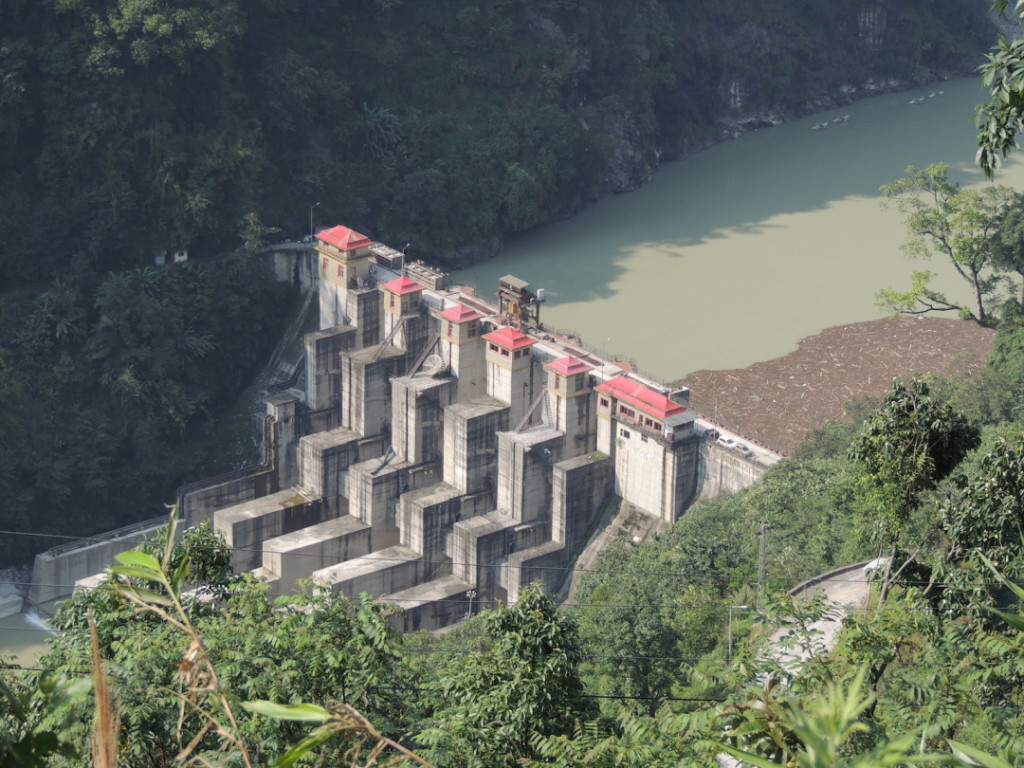by Chicu Lokgariwar
“Everybody loves us Lepchas” said Tseten. He went on to explain that this affection was important to the Affected Citizens of Teesta and was a major reason that the group decided never to add violence[i] to their arsenal of techniques in their fight to save the Teesta.
The idea of non-violence being a strategic decision rather than a (purely) moral one intrigued me. I was at a meeting where several anti-dam activists from the North-Eastern states were present. As I listened to their stories, it was clear that these veterans had several lessons for those of us worried about the death of their rivers today. Each of the groups that had been compelled to fight for their rights had evolved strategies and developed tools to help them.
Sadly, the struggle against ‘development’ projects that adversely impact the lives and livelihoods of people, as well as cause irretrievable harm to the environment, continues in many places across the world. Rather than reinventing the wheel, it will be useful for young activist groups to have access to the lessons learnt by those who have preceded them.
And so here are the lessons I learnt.
Work hard to get information. Ratan Bhandari’s memories of protesting against the West Seti Dam revolve around getting information. When the project was sanctioned, Bhandari’s only source of information was a slim booklet published by the West Seti Monitoring Group; no official documents were available. He wrote to the Ministry of Population and Environment with a copy to the Office of the Prime Minister and Council of Ministers, Ministry of Water Resource, Nepal Electricity Authority-NEA and Electricity Development Center requesting copies of the Environment Impact Assessment-EIA and project related document of West Seti hydro. However, he did not receive any replies. In 2000, the Ministry of Population and Environment published a public notice inviting comments on the EIA within 30 days. Ratan Bhandari wrote to the Ministry explaining that nobody has seen the copies of EIA, and even if they get copies of EIA they cannot understand English version of EIA. Therefore, it is not possible for local people to comment on EIA unless local language translations of the document are made available in the villages. This too was not acknowledged. Three years later, Bhandari wrote to the developer- the Snowy Mountains Engineering Corporation- requesting a copy of the EIA. He was advised that he would need to pay Rs. 50,000 for the copy. Finally, in 2009, the EIA was made available on the company’s website, but in a region where infrastructure is poor, and computer literacy low, this did not have any real meaning. This experience as narrated by Ratan Bhandari illustrated the many ways the government and dam developers attempt to block the required flow of information and the great persistence that is needed to break through these barriers.
Seek help. The Subansiri dam protest is one of the most prominent anti-dam agitations in the country[ii]. Unlike the protests in Sikkim, the Assam demonstrations did organise blockades, and memorably, impounded a turbine on its way to the dam. Despite this, they retained the support of the people of the valley. When talking of those days, Keshoba ‘Bhai’ Chatradhara spoke of how he and his friends had actively gathered support for their cause. They began with listing out all the groups that they could think of that existed in the area, from student’s unions to SHG federations. They reached out to forty such peoples’ networks and shared all that they knew of the dam and its consequences. They also printed a weekly paper sharing updates about the dam and the protest. This widespread and ongoing outreach meant that the movement was never without supporters or volunteers. More importantly, the anti-dam agitation was truly a peoples’ movement with support across diverse groups[iii]. Further, though the dam issue is now temporarily at rest, the network continues and remains active in other social movements.
Decide the image you want to present. Maintain it. This was my first interpretation of ACT’s (Affected Citizens of Teesta)decision to eschew the use of all violence in order to maintain the popular image of Lepchas as a peaceful people.
The ACT has been protesting against the dam for over a decade. During this period, they have received support from across the globe, as well as been the subject of many research papers and notes. This support is largely due to the fact that for a decade, despite new members and situations, they have scrupulously avoided indulging in violent demonstrations. This restraint has offered them credibility and ensured that lines of communication stay open.
Rely on the tools you are most comfortable with. The Meitei people of Loktak lake have been fighting for access to their lake for decades. Before the Ithai barrage was constructed in 1979, the lake was a wetland with a natural ebb and flow to its levels. During the monsoon, people would fish in the lake, and farm on its banks as the water receded in the summer. With the barrage, water began to be maintained at an artificially high and the people had no option but to give up farming. They continued harvesting fish, using the unique floating bunds known as ataphum. These are built on the floating vegetation known as
The 2006 Manipur Loktak Lake (Protection) Act, 2006 was enacted by the Government of Manipur “to provide for administration, control, protection, improvement, conservation and development of the natural environment of the Loktak Lake and for matters connected with as incidental thereto”. Ram Wangkheirakpam believes that this Act was created without any consultation. It ignores the rich traditions of the people that depend on Loktak lake and labels them ‘encroachers’. Since then, the Meitei fisherfolk have been subjected to raids where they have been physically intimidated, their phumdi huts have been burnt and their belongings destroyed.
The Meitei decided to turn their humble dugout canoes into tools for the resistance. These are silent and highly manoeuvrable as compared to the large motorboats used by the police and government officials. The fisherfolk use these canoes to spread information and to surround the government boats and impede their movement. They claim, with justification, that the motorboats pollute the waters of the lake with oil and also lead to noise pollution. ALLAFUM (The All Loktak Lake Area Fishermen’s Union Manipur) has banned the entry of motorboats in the area. This safeguards the lake and protects its people.
Takeaway These are the practical tips I received on how to deal with a crisis in one’s backyard- Get information, collect friends, form a strategy, use the tools closest at hand. But those are not the most important things I learnt from the people I spoke with. The really crucial thing, I realised, is a sense of responsibility. Not one of the activists lamented that ‘somebody should do something’. Each person accepted that he or she was that ‘somebody’ and slowly began to chip away at what must have seemed like an insurmountable problem. Wondering what their motivation could be, I asked why they stepped into all-consuming and potentially dangerous struggles. The replies I received were all variations of ‘How could I see an injustice happening and not speak up?’
That is my takeaway lesson: Don’t stay quiet.
Chicu Lokgariwar (chicu.l@gmail.com)
(Travel for this article has been funded by the CCMCC-NWO project–Hydropower development in the context of climate change: Exploring conflicts and fostering cooperation across scales and boundaries in the Eastern Himalayas.)
Courtesy: SANDRP – South Asia Network on Dams, Rivers and People
https://sandrp.in/2019/03/01/fighting-destructive-dams-lessons-from-the-masters/




